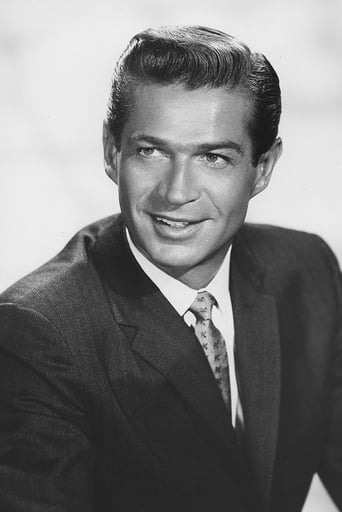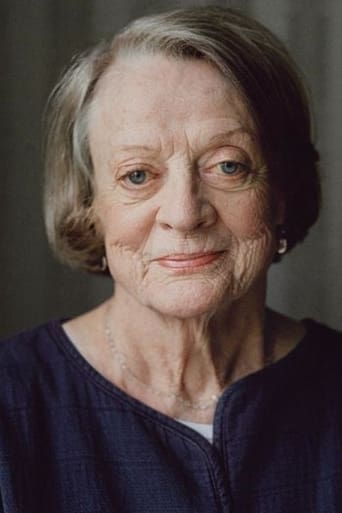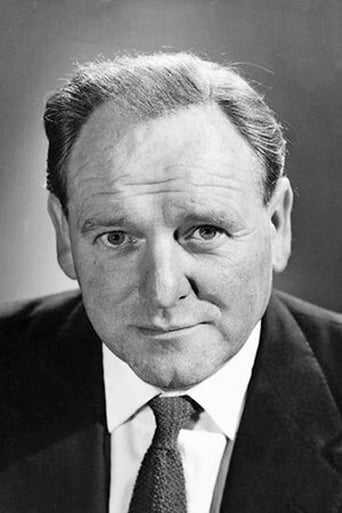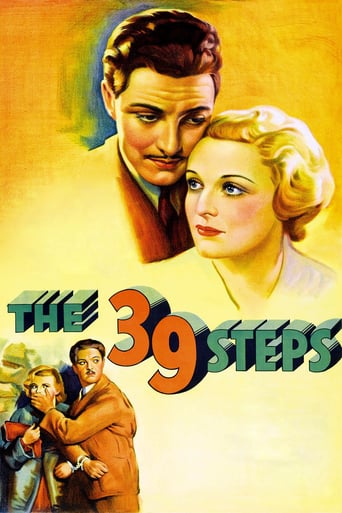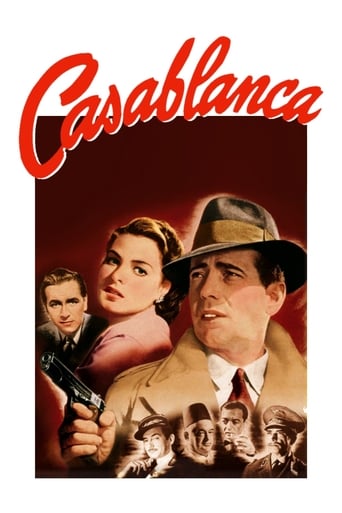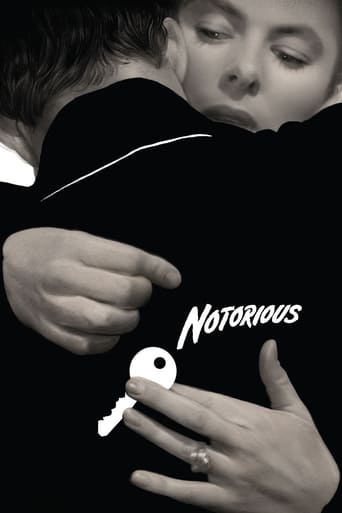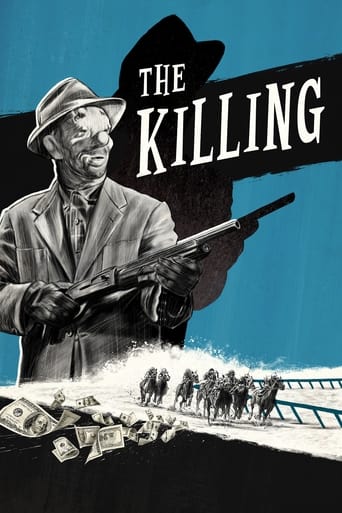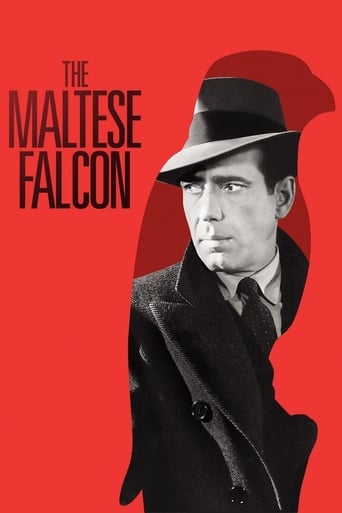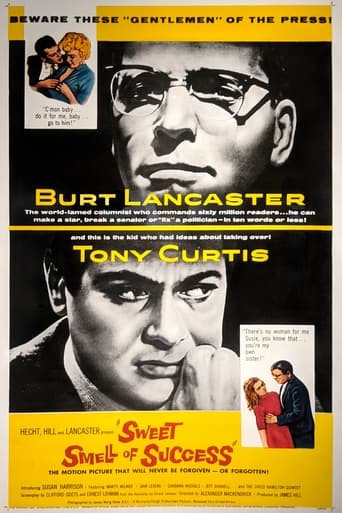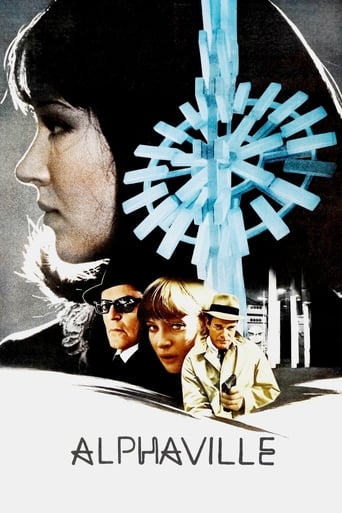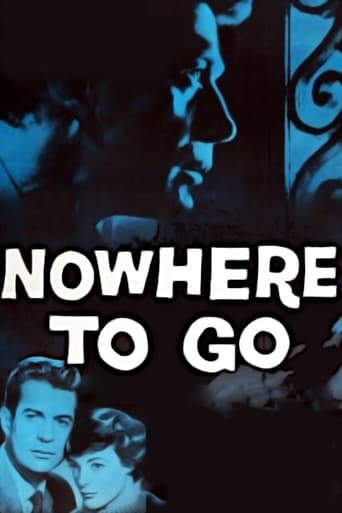
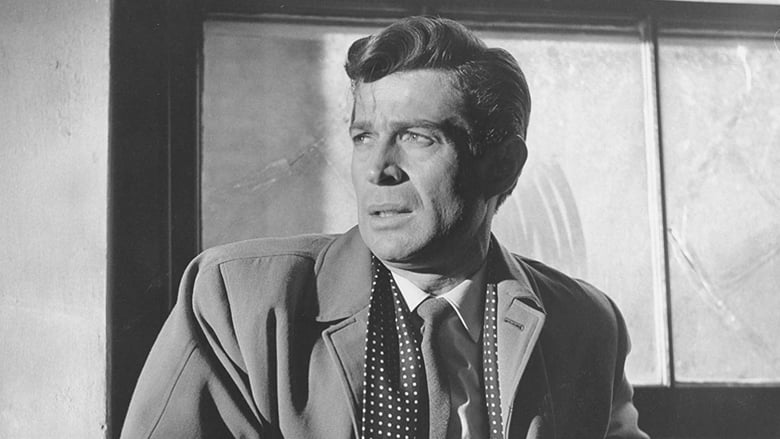
Nowhere to Go (1958)
A professional thief is sprung from prison with the assistance of a new partner who wants to know where he's hid his loot.
Watch Trailer
Cast


Similar titles
Reviews
The Age of Commercialism
As Good As It Gets
It’s not bad or unwatchable but despite the amplitude of the spectacle, the end result is underwhelming.
The storyline feels a little thin and moth-eaten in parts but this sequel is plenty of fun.
I watched this because it is a product of the great Ealing Studio of West London, although it was released under the imprimis of both Ealing and MGM. Evidently Ealing and MGM had come to some sort of a working agreement. The movie is a complete departure from the quirkily distinctive films of Ealing's heyday - Man in the White Suit, Lavender Hill Mob, Whiskey Galore, The Ladykillers. All of those films had a distinctive and gentle take on the British national character. Nowhere to Go is a straightforward crime drama, and forgoes that unique Ealing flavor. For what it is it isn't bad. It's good to see Maggie Smith in one of her earliest roles, and Bernard Lee, who will always be remembered as "M" in the Bond movies. Paul Gregory for me is rather wooden. However, there a few too incredulities in the plot, and the ending is a disappointment. The earlier Ealing movies always put a sense of closure on things. This movie just sort of stops, in what seems to be a gesture toward nihilism.
Admirably elegant and up-to-the-minute 1958, this British crime drama, made at Ealing and released by MGM, suffers from having nobody, really, to root for. George Nader, not looking his best and underplaying to the point of anonymity, is the wily coin thief who cleverly filched a valuable collection from Bessie Love and has broken out of prison to reclaim it. He runs afoul of a nasty accomplice and nastier fate. It's compelling, and it has an arresting leading lady in Maggie Smith (whose part, though she's second-billed, is quite small), and the gray London visuals, fancy camera angles, and so-cool jazz soundtrack combine to create an evocative, downbeat atmosphere. But Nader's character is so repellent you don't want his scheme to succeed, and you're not surprised when it doesn't. It's ahead of its time in its moody, minimalist storytelling, and well worth seeing. But it's a downer.
This is atypically gritty fare for Ealing (with the distribution handled by MGM, who excised some 15 minutes so that the film could fit into a double-bill!) – for the record, I have watched a couple of established classics from them in this vein, namely IT ALWAYS RAINS ON Sunday (1947; helmed by Seth Holt's brother-in-law, Robert Hamer!) and THE BLUE LAMP (1950), and among a few I own but have yet to check out is THE SIEGE OF PINCHGUT aka FOUR DESPERATE MEN (1959), which happened to be the famed company's very last effort! Anyway, following years honing his craft as an editor and getting a hang of the business side of movie-making as well in the capacity of associate producer, Holt graduated to the director's chair with NOWHERE TO GO and, as already intimated, deliberately set out to make "the least 'Ealing' Ealing film ever made"! The result is a powerful noir (with exemplary cinematography by Paul Beeson and, accordingly, editing accompanied by Dizzy Reece's notable jazz score), which style flourished in Britain during those years – numbering the likes of HELL IS A CITY and THE CRIMINAL (both 1960) among its most notable titles, but also ACROSS THE BRIDGE (1957) which, as with the film under review, continued the prevalent practice of the time of recruiting a Hollywood leading man to enhance its commercial appeal overseas. In this case, it is George Nader: having recently watched him in the unenthusing pair of William Castle's would-be spectacle SERPENT OF THE NILE – THE LOVES OF CLEOPATRA (1953) and the low-brow Harry Alan Towers adaptation of Sax Rohmer's THE MILLION EYES OF SUMURU (1967), I frankly had little faith in his ability to carry this through; however, I was glad to be proved wrong as he made for a compelling presence here, managing the various nuances of his complex character with remarkable ease.The film immediately starts off with a suspense situation as Nader is sprung from jail by his partner (and ex-army buddy) Bernard Lee; then, we follow in flashback how he came to be there, having fleeced an ageing socialite out of the proceeds from the sale of her late husband's priceless collection of old coins – interestingly, he had practically given himself up, hoping to get 5 years but he is given double that amount and, of course, he is not about to wait that long to reap the rewards of his gambit! However, he soon falls foul of the brutish Lee, who believes Nader had double-crossed him when, in fact, he had been unable to make the collection from the safe deposit-box due to the sudden arrival of the Police Inspector (Geoffrey Keen) who had arrested him! No longer trusting his accomplice, he surprises him at his home and ties him up and gags him; he had already demonstrated his resourcefulness by affecting a club-foot while dealing with the bank because, as he says, "nobody looks a cripple in the face". Unfortunately, Lee dies from having choked on his false teeth which were dislodged during his struggles to break free...so that Nader is now both a fugitive and a murderer! He tries to get help from a number of underworld contacts but they either 'rat' on him to the Police or else deem him "too hot", which makes him realize he has to go it alone – however, support does come his way in the form of Maggie Smith (vaguely glamorous in her movie debut) as the ditched girlfriend of the owner of the flat in which Nader had been hiding out. Eventually, she shelters him in her family's Welsh cottage (while admitting that her uncle is a Police constable!), but the dogged Keen soon turns up there to interrogate her. The ultimate irony is that Nader panics upon spying the scene from afar through a pair of binoculars – when Smith is somehow released virtually instantly! – and, caught stealing a bike, is shot by its proprietor; though he succeeds in taking off in the man's lorry regardless, he succumbs to his wounds shortly after, leaving the girl to ponder her own future.The intelligent script was written by Holt himself (actually, the only one he penned of his 6 directorial efforts!) in collaboration with eminent film critic Kenneth Tynan; while the central premise of a doomed man on the run has seen ample service over the years (the prototype being perhaps Carol Reed's ODD MAN OUT {1946}), this is still pretty much an unsung gem within the genre. For what it is worth, other influences can be identified in the early scenes of the conniving protagonist ingratiating himself with the old lady, which recall a similar ruse in WITNESS FOR THE PROSECUTION (1957), and also the downbeat country-side ending that is redolent of both THE ASPHALT JUNGLE (1950) and HELL DRIVERS (1957)!
If this film had been made in 1950s France by directors named Clouzot or Melville, this Ealing production would be a regular on the revival circuit and in film school classrooms. Sadly, it's a completely unheralded film. Directed expertly by Seth Holt, who co-wrote the film with critic Kenneth Tynan, the film features an on-his-way-to-Europe George Nader as an American con man in London, looking to score by stealing a valuable coin collection (the owner is played by American expatriate and silent film star Bessie Love). His companion in crime is the docile but dangerous Bernard Lee, and there are double crosses and dirty dealings aplenty. The star of the film is Paul Beeson's amazing cinematography, always artistic but never too showy. Beeson also did sterling work for Ealing's The Shiralee (1957), and it's hard to understand how his career ended up on Harry Alan Towers scrap-heap. Dizzy Reece's outstanding jazz score (his only film work) fits the story like a glove and Maggie Smith makes her film debut as Nader's love interest. This is a great film and a true work of art.


